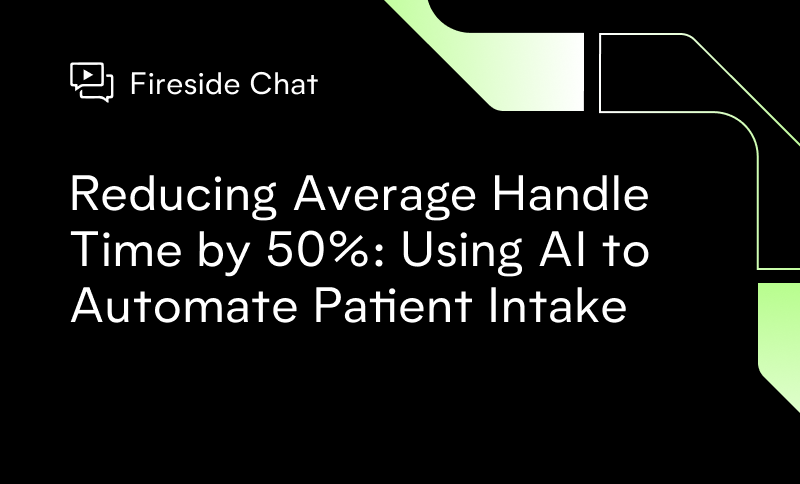As conversational AI adoption continues to skyrocket across contact centers globally, many customer service leaders who have not yet implemented the technology are at a crossroads: should they build a conversational AI solution from scratch or purchase one?
For contact centers at this stage, understanding the tradeoffs between each approach is the first step in the decision making process.
But even after you have a grasp on “build versus buy” there still remains a lot to consider before making a decision. While the potential benefits of conversational AI are clear – staffing solutions, higher CSAT scores, eliminated hold times – so too are the risks of building it yourself.
Beyond the upfront costs of a dedicated in-house development team, a months to years-long project timeline, and numerous integration requirements, the downstream costs of building conversational AI in-house far outweigh those of working with a solution provider.
Below are some of the most common, though under-discussed, costs businesses incur when they try to build their own conversational AI solution.
Production ineffectiveness
There is a stark difference between successfully building a conversational AI solution, and deploying a conversational AI solution that is actually successful at what it’s designed to do.
Many conversational AI solutions can perform exceptionally well in a controlled environment. However, once deployed, conversational AI’s effectiveness can struggle when met with real-world challenges like accents, noisy environments, and customers who use slang instead of traditional keywords.
There are unlimited scenarios that can happen when a customer picks up the phone and a conversational AI is unprepared for the unpredictable. Conversational AI is a highly complex technology that requires both an understanding of your business as well as elegantly designed conversational linguistics in order to be effective.
The cost: Without a team of ML engineers, AI experts, and best-in-class natural language processing and QA practices, an ineffective solution can end up costing you more valuable agent time as escalations increase and customer patience runs thin.
The Replicant difference: Replicant’s out-of-the-box conversational AI is purpose-built for customer service. This means there is no scenario that the Thinking Machine hasn’t already encountered, and subsequently mastered. We never outsource development or implementations, meaning the effectiveness of your product is never at risk and your customer brand is always accounted for. The Thinking Machine also leverages pre-built powers that can be dragged and dropped to scale conversations and A/B test new flows with ease.
Frustrating conversation design
Effective conversational AI – that is, its ability to fully resolve customer issues or intelligently route customers to the right place – still doesn’t guarantee customer satisfaction.
CSAT is most often correlated to a fast, natural experience. In order to create this, conversations must be designed for quick turns between human and machine speakers. AI must allow customers to ask multiple questions at once and have the continuous learning ability to pick up on new styles of speech.
The cost: Poor conversation design can lead to numerous CSAT issues. Without in-house experts in both machine learning and the principles of conversational design, customers interacting with poorly designed AI will find themselves repeating questions or conforming to robotic styles of speech as they would with a traditional IVR.
The Replicant Difference: Replicant’s Thinking Machine boasts a below-one-second latency between turns in a conversation and over a 94% inference accuracy. For the customer, these factors mean they can speak quickly, ask multiple questions right up front, and often end up getting their issue resolved faster than they could with a live agent leading to CSAT scores on par or better than humans.
A black box of analytics
A modern conversational AI solution doesn’t guarantee modern analytics. In fact, building an analytics platform to capture customer conversations, surface insights, and unlock actionable recommendations is a project unto itself.
Contact centers interested in building their own conversational AI should be certain they can leverage the data it will create to avoid having a black box of analytics.
The cost: Without full analytics capabilities, contact centers who build conversational AI won’t have access to data around what’s working, what needs improvement, and whether or not your solution is successful. And without fully built self-service options, low analytics capabilities will cost contact centers time when they want to edit scripts or respond to customer trends.
The Replicant Difference: With Replicant, contact center leaders get visibility into all customer support conversations through an end-to-end dashboard. Once the Thinking Machine begins taking calls, contact center managers can instantly monitor conversations, analyze insights from unstructured conversation data, and take action immediately with self-service script editing to create an optimal customer experience fast.
Insufficient redundancies
Conversational AI is a leading solution for staffing challenges and unpredictable call volumes in the contact center. However, this only amplifies the importance of back-up planning during inevitable outages and rising DDoS attacks.
When building a solution, make sure your redundancy planning can stack up with the best out-of-the-box solutions that often include layers of fail-safes that eliminate the costly risks of downtimes.
The cost: Without a backup plan for climate, cybercrime, and outage-driven downtimes, insufficient redundancies can lead to a litany of problems. Hold times can skyrocket, data can be compromised, and astronomical human hours can all follow a poorly timed conversational AI outage.
The Replicant Difference: Replicant’s platform provides high-availability infrastructure for every customer that runs 24/7 with efficient load balancing across thousands of concurrent calls. With multiple layers of redundancy, even the largest and most prolonged outages mean the Thinking Machine provides always-on support.
 First Notice of Loss
First Notice of Loss 



